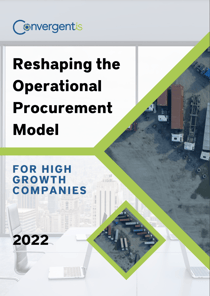Achieving procurement excellence is a goal for many; however, like any good goal, it is more than just setting an end state. Instead, successful teams carefully consider the metrics that will show progress towards this goal in a method of “managing by fact.” In the case of procurement optimization, many leading organizations have looked to first-pass yield in a 3-way match as an indicator of both process quality and efficiency.
A 3-way match then considers the alignment of a purchase order, which is a detailed overview of what is needed from a supplier, the receiving document, which is an outline of the goods sent from a supplier and the invoice, which is a document showing the money a buyer owes for something ordered. In procurement, a 3-way match of supporting documents ensures that companies can detect errors or fraudulent payments that may otherwise go to vendors. Consequently, this process becomes vital for managing spending and cash outflow.
Why First-Pass Yield Is a Good Indicator of Process Quality
The assumption is that if your team is doing their job correctly, the 3-way match will easily line up, and valuable employee resources will only be engaged in one-off matching errors. Keep in mind that taking the time to investigate and resolve these errors takes extra time as compared to a standard match. Therefore, the principle suggests if things work the first time correctly (first pass yield) on most purchases, your exceptions that need manual rework will be few and far between. And by only using employees for these now fewer instances, a process known as management by exception, the cost of a 3-way match on average will decrease accordingly.
Unfortunately, in discussions with procurement teams, we have found that less than 50% of companies have a first-time match rate between their invoices, receipts and purchase orders. Since each rework adds to the total processing cost, it becomes critical that teams get to the root cause of a match failure.
Key Reasons for Match Failure
Although a standard in operational procurement, many teams are still seeing a lower-than-average match rate. The logical question for many is, “why do these discrepancies (better known as match failure) occur?” and “what are the leading reasons for match failure?”
Missing Information in a Purchase Order
One of the key things that are flagged in a three-way match is if the information is missing in the price, quantity or vendor. With missing information, back and forth is needed to confirm the exact details of the order before it is sent to a vendor. Then, the vendor has to confirm they will execute the purchase order, including if there is sufficient stock to meet the order, and if they can do it by the buyer’s deadline.
Therefore, what leading teams have considered is the possibility of a guided process that ensures, even before the purchase order, that all the information in the purchase requisition is collected correctly and documented in the company’s ERP (Enterprise Resource Planning) system. These details can then be automatically flipped into a purchase order with all the correct details. However, even more importantly, as a part of guided processes, leading organizations will ensure that the only suppliers available to choose from are prequalified. Therefore, when a purchase is initiated, that is from a preapproved supplier for an amount less than the total budgeted amount, no approval is needed, and more importantly, a business rule can confirm that this document matches the receipt and invoice of the goods when the time comes.
Goods Aren't "Received" At The Point of Receipt
The second area where match failure occurs is between the order receipt (goods receipt) and the purchase order. At this stage, teams must ensure that the exact number of goods was received, or if only a partial fulfillment occurred.
It then becomes the onus of team members at the point of delivery to acknowledge receipt of goods and services in real time when and where it happens and track the progress against the Purchase Order. If teams are successful, they can eliminate one step within the three-way match process or, at the very least, give their business system the correct data to automatically verify that this value matched that of the purchase order.
Invoices Are Hard to Match When They Aren't Itemized
Another area where match failure is common is when the price and quantity on an invoice do not match the authorized figures in the PO (Purchase Order). Consider that at the end of a project a buyer might get 300 invoices that need to be approved individually or suppliers may send one invoice for everything that was purchased in a given period. It is then up to the buyer to confirm they are being invoiced for exactly what goods they received. At this point words matter, and the summary text in the purchase order must match the goods receipt and the invoice. Invoices in theory must be itemized, rather than generic summaries, otherwise a human may need to decipher the text to confirm the document matches.
At this stage, many teams have recognized that if the first two documents in a three-way match are in alignment, that invoicing becomes redundant. At this stage, some teams have ensured an automatic match of the first two documents results in automatic payment to a supplier, in a process known as Evaluated Receipt Settlement (ERS). Conceptually, leading organizations recognize that if they are ordering and receiving off their own records, it is only logical that they are paying off their records too.
Driving Improvements
Therefore, if teams can ensure that the three-way match works most of the time, they can greatly limit the amount of exceptions that occur and nearly guarantee a first pass yield. The caveat is that automation requires a centralization of data, so that teams have full visibility of the purchasing process in a single organized database.
While many teams recognize that visibility is the key to end-to-end solution that ensures all data is being captured in one place, it is the price tag that gets them. The ConvergentIS Operational Procurement portal, enables users with an end-to-end solution that not only allows users to connect and visualize their end-to-end process, and enable business rules to automatically approve a standard purchase, but at a fraction of the enterprise price tag they were expecting.
We reframe this mindset in our free guide. Linked below.


